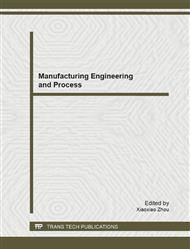p.329
p.338
p.345
p.352
p.357
p.362
p.367
p.373
p.378
Developing the Driver Module for PCI Board Using RT-LAB Software
Abstract:
The RT-LAB real-time simulation software can expediently and rapidly apply the Simulink model to the hard-in-the-loop simulation system and greatly save the expenses for development, experiment and measurement, thus cutting down the development cycle. The use of the self-made PCI board in the RT-LAB software requires the development of its driver module by the user himself. This paper presents the idea and development processes of the PCI bus-based board driver with the RT-LAB software. Taking as an example the NI-6230 multifunctional data acquisition board driver, the paper also presents the PCI board driver's key codes and their compilation with the RT-LAB software.
Info:
Periodical:
Pages:
357-361
Citation:
Online since:
April 2012
Authors:
Price:
Сopyright:
© 2012 Trans Tech Publications Ltd. All Rights Reserved
Share:
Citation:


